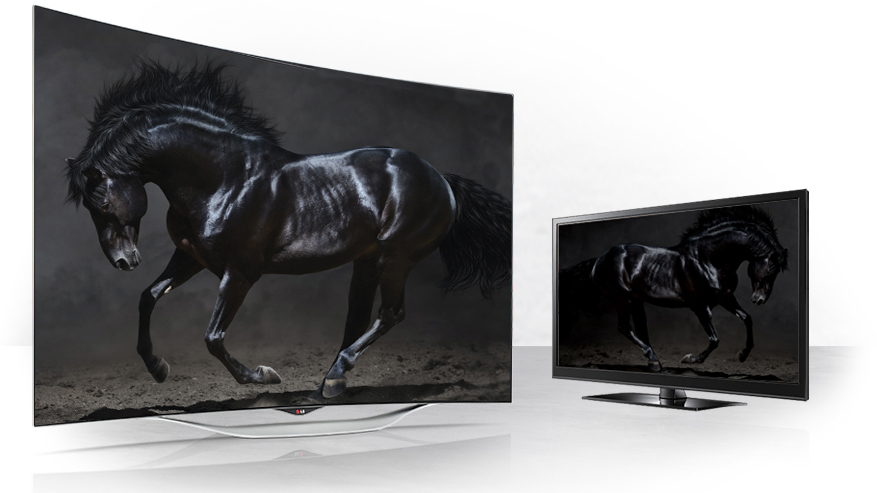
As TV technology marches on, maybe it's time to consider where your priorities and loyalties lie. Plasma is on its way out – strong images but too heavy, too energy-draining. LED tech has plateaued. There's a new kid in town: OLED.
Organic Light Emitting Diodes, as their name more or less suggests, are self-lighting. On a full-HD display such as LG's 55EC930V, every last one of the screen's pixels can be individually switched on and off. Because they're self-lighting, they require no backlight, but provide high levels of brightness. With a response time of less than 1 micro second, OLED technology provides a faster and brighter picture than LED.
The result is what LG calls True Black, though it also offers also endless and subtly differentiated levels of grey. Again, LG has a catchy name for this: "Infinite Contrast". This means you get a depth of presentation above and beyond what even the best LED screens can offer, with light and shade rendered much more like real life.
Whites are piercingly bright, blacks have a true absence of light and colouration, and all the shades in between are rendered in a lifelike way. Gradients from light to dark are smooth, not fudged, banded or fuzzy. LED can't do that, and no matter how clever backlighting gets, it never will be able to.
A truly cinematic viewing experience
That means you can see movies the way the director intended, picking out the subtle, telling details in darker scenes. How many times have you found yourself reaching for the remote to crank the brightness up when watching a movie? That's a thing of the past with OLED: from Hobbits in torch-lit dungeons to moonlit raids on terrorist bases, you see even the most fantastical things as they'd look in real life.
OLED also gives amazing results with sport, catching the light and shade on the pitch whilst maintaining the true, lifelike colour of the grass. The same goes for next-gen video games, which can suffer badly on LED screens in lower-light and night-time scenes. With OLED, you're always right in the action, rather than straining your eyes or grabbing for the remote to lift play out of the murk. It won't make you a better gamer, but it at least means you won't be taken out by an unseen opponent who has faded into a poorly-rendered background.
Colours that pop
Beyond the self-lighting pixels that only OLED can offer, LG's 4 Colour Pixel tech, adds a white sub-pixel to the usual red, green and blue giving a wider, more vivid and lifelike colour palette.
Get daily insight, inspiration and deals in your inbox
Sign up for breaking news, reviews, opinion, top tech deals, and more.
By providing True Black and Infinite Contrast alongside those astounding WRGB colours, the OLED difference is clear. It is a distinct evolution from LED and outperforms it in terms of accuracy, depth and immersion - and pricing is no longer as challenging as it was a year or so ago. If you're serious about your movies, sport, gaming and TV, and serious about being on tech's cutting edge, it's the only game in town right now.
Find more Christmas articles on XmasRadar. Supported by LG.
The TechRadar hive mind. The Megazord. The Voltron. When our powers combine, we become 'TECHRADAR STAFF'. You'll usually see this author name when the entire team has collaborated on a project or an article, whether that's a run-down ranking of our favorite Marvel films, or a round-up of all the coolest things we've collectively seen at annual tech shows like CES and MWC. We are one.